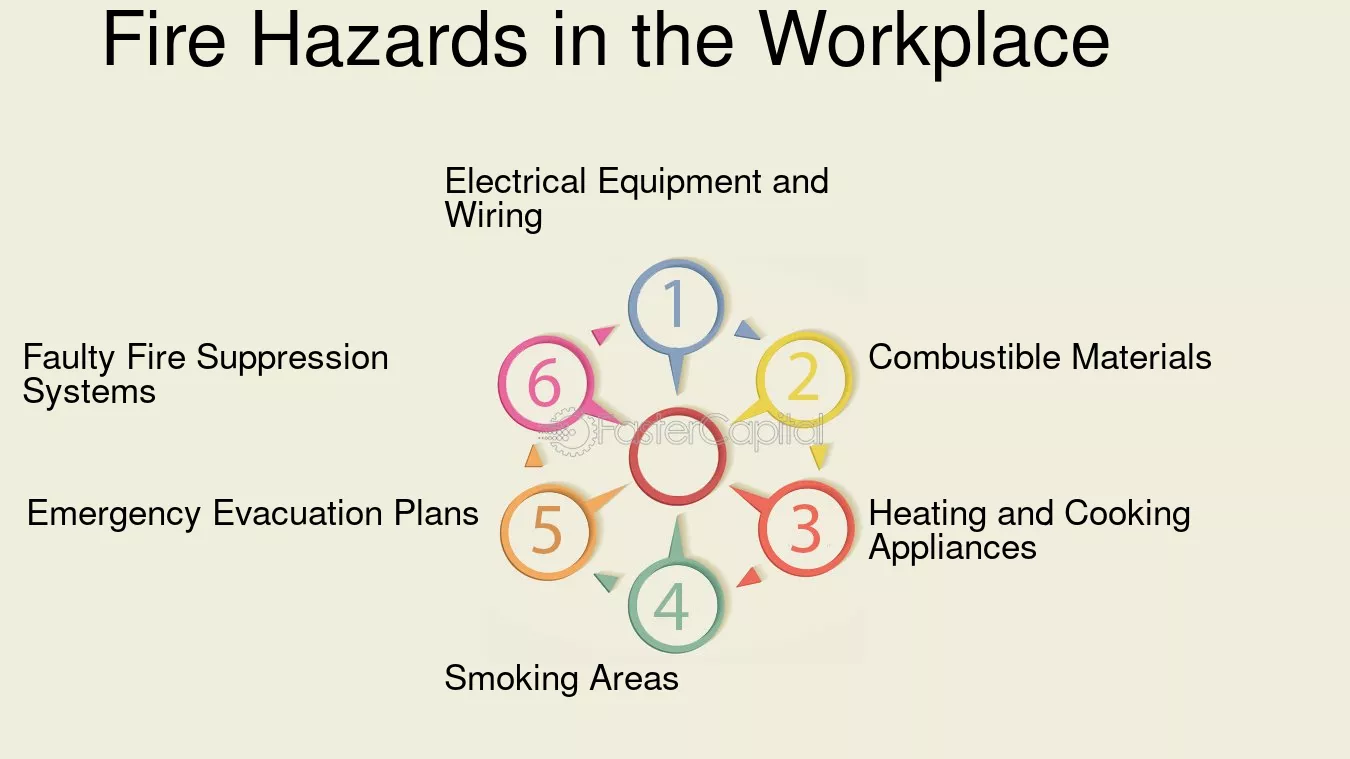Fire safety can sometimes fall by the wayside in construction projects, overlooked amidst the noise of progress and development. Yet, fires on construction sites are not just potential hazards; they can be catastrophic, endangering lives, halting projects and resulting in significant financial losses.
From the storage of flammable materials to the maintenance of heavy machinery, each aspect discussed in this article aims to ignite a commitment to heightened safety standards and proactive fire risk management on construction sites.
Here are some of the most commonly overlooked fire safety risks in construction.
Commonly Overlooked Fire Safety Risks in Construction
1. Improper Storage of Flammable Materials
Storing flammable materialssssss requires careful consideration of factors like temperature, ventilation and proximity to ignition sources. Materials such as paints, solvents and fuels should be stored in containers that meet regulatory standards and kept in a cool, well-ventilated area. Additionally, these materials should be separated from other construction materials and activities to prevent accidental ignition.
2. Accumulation of Combustible Dust
Wood, metal and plastic dust can create an explosive atmosphere if ignited. It’s important to implement dust control systems such as vacuum extractors and air filtration units to manage the risk. Regular cleaning schedules should be maintained, and areas where dust accumulates (like sawing or sanding stations) should be isolated and equipped with appropriate fire suppression systems.
3. Temporary Electrical Systems
Temporary electrical systems often lack the permanence and safety features of installed wiring. Overloading circuits with power tools and machinery can lead to overheating and fires. Using circuit breakers and ensuring all temporary wiring complies with electrical safety standards can help mitigate these risks. Regular inspections by qualified electricians are also essential.
4. Lack of Fire Detection Systems
Even temporary structures and areas under construction should have basic fire detection and stopping systems. Smoke alarms and fire extinguishers can help prevent major fires. These systems should be checked regularly to ensure they are operational by someone who has taken relevant courses.
5. Hot Work in Inappropriate Areas
Hot work, including welding, soldering and cutting, should only be performed in designated areas that are clear of flammable materials and equipped with fire-resistant shields and guards. Workers should have hot work permits, and a fire watch person should be present to monitor the area during and after the work is completed to ensure no sparks or embers can cause a fire.
6. Lack of Fire Extinguishers and Firefighting Equipment
Every construction site should have a sufficient number of fire extinguishers and other firefighting equipment readily accessible and suited to the types of fires that might occur (e.g., electrical, flammable liquids). Fire extinguishers must also be inspected regularly by someone who has taken a fire extinguisher training course.
7. Poorly Managed Waste and Rubbish
Construction sites generate a lot of waste materials that can easily fuel a fire. Implementing strict policies for waste management, including designated waste collection points and regular removal, can significantly reduce this risk. Combustible waste should be stored away from main work areas and disposed of daily.
8. Use of Temporary Heating Devices
Portable heating devices should be used with caution, especially near any flammable or combustible materials. Placing these devices on non-combustible surfaces, maintaining a safety perimeter and never leaving them unattended while in operation are important safety practices. Also, heaters should be inspected regularly to ensure they are functioning properly.
9. Inadequate Training on Fire Safety
Comprehensive fire safety and fire-stopping training should be provided to cover the specific risks present on the construction site, proper use and handling of materials, emergency procedures and the use of firefighting equipment. Regular drills and training updates can help ensure that all workers know how to act quickly and effectively in case of a fire.
10. Neglected Maintenance of Machinery and Vehicles
Heavy machinery and vehicles used in construction can be a fire hazard due to overheating and fluid leaks. Implementing a regular maintenance schedule that includes checking for leaks, proper lubrication and functional cooling systems can prevent these risks. Operators should be trained to recognise signs of mechanical failure that could lead to fires.
Tips to Reduce the Risk of Fire in Construction
Fire safety in construction is critical not only for the protection of life and property but also for ensuring the continuity of construction activities. Here are practical tips to enhance fire safety measures and mitigate the risks:
- Regular Safety Audits and Inspections: Conduct frequent safety audits and inspections to identify and rectify potential fire hazards. These inspections should be carried out by fire safety professionals who can provide expert advice on improving safety protocols.
- Enhanced Training and Awareness Programs: Regularly scheduled training sessions should be mandatory for all workers, focusing on fire safety procedures, proper handling of flammable materials and emergency response techniques. Interactive simulations and drills can reinforce this knowledge and ensure readiness.
- Strict Adherence to Safety Regulations: Ensure that all construction practices comply with national and local fire safety regulations and standards. Staying updated with changes in legislation can help prevent compliance-related issues.
- Installation of Advanced Fire Detection Systems: Utilize modern fire detection systems, including heat and smoke detectors, which can provide early warnings during the initial stages of a fire. These systems should be integrated into temporary electrical setups and monitored regularly.
- Effective Communication Systems: Implement robust communication tools to alert everyone on-site in case of a fire. This can include alarms that are audible across the construction site and rapid notification systems on mobile devices.
- Designated Smoking Areas: Clearly mark and enforce designated smoking areas away from flammable materials and main construction activities. Provide safe receptacles for disposing of smoking materials.
- Fire Safety as Part of Site Layout Planning: Incorporate fire safety considerations into the initial planning stages of construction. This includes safe routes for emergency vehicles, clear evacuation paths and strategically placed firefighting equipment.
- Use of Non-Combustible Materials: Where possible, use materials that are less likely to ignite and contribute to the spread of fire. Choosing such materials can significantly reduce the risk of fire on construction sites.
- Maintenance of a Clean and Organized Site: A well-maintained construction site is less prone to fire outbreaks. This involves regular removal of debris, orderly storage of materials and immediate cleanup of spills.
- Collaboration with Local Fire Departments: Work closely with local fire departments to ensure they are familiar with the site layout and specific hazards. This collaboration can include joint drills and their input on fire safety planning.




